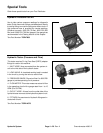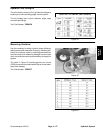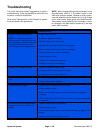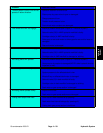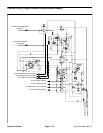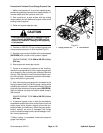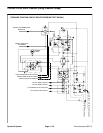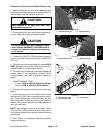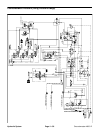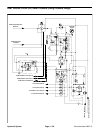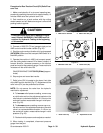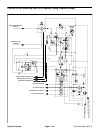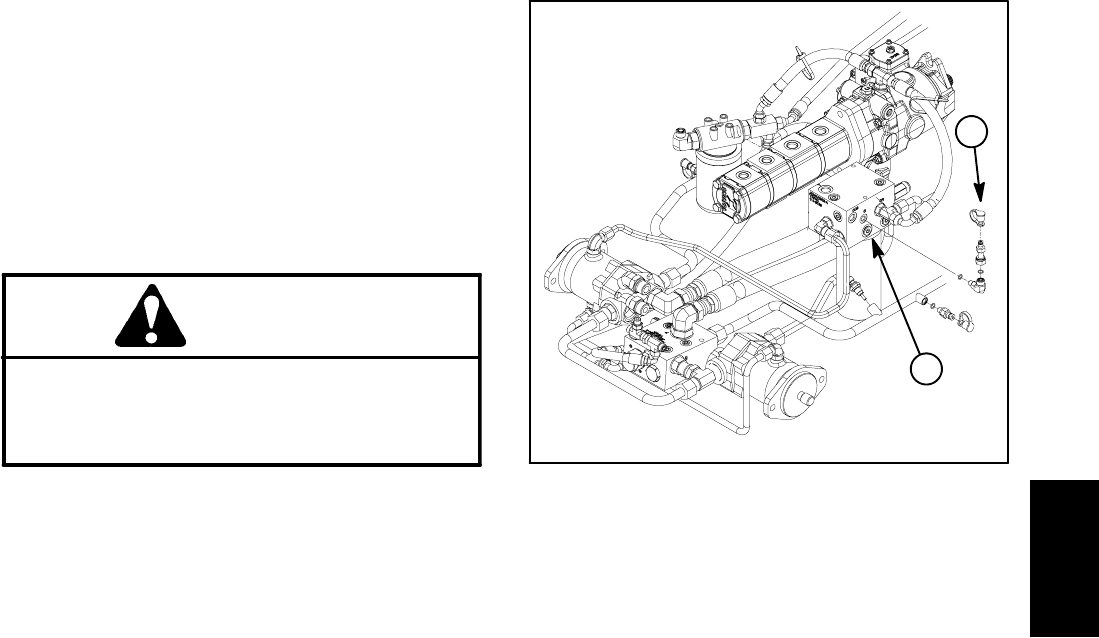
Groundsmaster 4000--D Hydraulic SystemPage 4 -- 33
ProcedureforTraction CircuitChargePressure Test
1. Make sure hydraulic oil is at normal operating tem-
perature by operating the machine for approximately 10
minutes. Make sure the hydraulic tank is full.
2. Park machine on a level surface with the cutting
decks lowered and off. Make sure engine is off and the
parking brake is applied.
3. Raise and support operator seat.
CAUTION
Prevent personal injury and/or damage to equip-
ment. Read all WARNINGS, CAUTIONS and Pre-
cautions for Hydraulic Testing at the beginning
of this section.
4. Connect a 1000 PSI (70 bar) pressure gauge onto
charge pressure test port on filter manifold (Fig. 21).
5. Start the engine and put throttle at full engine speed
(2870 RPM) with no load on the hydraulic system.
GAUGEREADINGTOBE200 to 300 PSI (13.8 to
20.6 bar).
6. Stop engine and record test results.
7. If there is no pressure or pressure is low, check for
restrictioninpump intakeline.Also, inspectchargerelief
valve located in filter manifold (see Hydraulic Manifold
Service: Filter Manifold in the Service and Repairs sec-
tionofthis chapter).If necessary,check forinternal dam-
age or worn parts in gear pump.
8. Also, with the pressure gauge still connected to the
charge pressure test port, take a gauge reading while
operating the machine in forward and reverse. Start the
engine and put throttle at full engine speed (2870 RPM).
Apply the brakes and push the traction pedal forward,
then reverse.
GAUGEREADINGTOBE200 to 300 PSI (13.8 to
20.6 bar).
9. If pressure is good under no load, but consistently
drops below specification when under traction load, the
piston pump and/or traction motor(s) should be sus-
pected of wear and inefficiency. When the pump and/or
traction motor(s) are worn or damaged, the charge
pump is not able to keep up with internal leakage in trac-
tion circuit components.
10.When testing is completed, disconnect pressure
gauge from test port.
1. Charge pressure port 2. Filter manifold
Figure 21
1
2
Hydraulic
System




